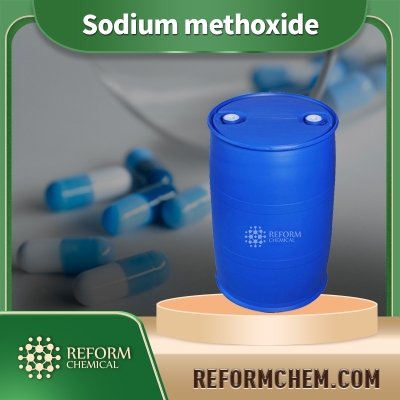-
Categories
-
Pharmaceutical Intermediates
-
Active Pharmaceutical Ingredients
-
Food Additives
- Industrial Coatings
- Agrochemicals
- Dyes and Pigments
- Surfactant
- Flavors and Fragrances
- Chemical Reagents
- Catalyst and Auxiliary
- Natural Products
- Inorganic Chemistry
-
Organic Chemistry
-
Biochemical Engineering
- Analytical Chemistry
-
Cosmetic Ingredient
- Water Treatment Chemical
-
Pharmaceutical Intermediates
Promotion
ECHEMI Mall
Wholesale
Weekly Price
Exhibition
News
-
Trade Service
In early June, international crude oil prices reached a new high, among which the July contract of the WTI crude oil futures active contract of CME Group once broke through the $120 / barrel mark, while the price of ICE Brent crude oil also rose above
$120 / barrel.
At present, international energy issues are still the main focus of the world economy, especially the sanctions imposed on Russia by Europe and the United States under the Russian-Ukrainian conflict, resulting in the international crude oil market is facing a supply gap
caused by the decline in Russian crude oil exports.
The picture shows the July contract of CME WTI crude oil futures breaking through $120 / barrel this week
In our view, the current high crude oil prices are mainly supply issues, the demand outlook is not very optimistic, global economic growth is slowing under high inflation, and even the possibility
of a recession is not ruled out.
After every round of energy crises in history, the world economy has been "a chicken feather", basically bringing about economic recession
in Europe and the United States.
Therefore, in the short term, the gap in crude oil supply is difficult to make up
.
In the short term, the global economy faces the risk of recession caused by high inflation, and crude oil prices eventually fall
again with the slowdown or recession.
The problem of crude oil supply cannot be solved in the short term
In terms of production, according to the data released by the EIA, in April 2022, the global crude oil supply was about 98.
74 million barrels per day, of which OPEC crude oil supply was about 33.
92 million barrels per day
.
The OPEC production increase that the market has been concerned about finally arrived in June, and on June 2, local time, OPEC+ decided to accelerate the acceleration of crude oil production, and in July and August 2022, crude oil production increased by 648,000 barrels per day compared with the original plan of 216,000 barrels per day, an increase of 50%.
However, from the perspective of OPEC members, only Saudi Arabia and Kuwait have surplus capacity to increase production, resulting in a small increase in OPEC crude oil production
.
According to the resolution of the OPEC+ June meeting, Saudi Arabia will increase by 114,000 bpd, 170,000 bpd and 170,000 bpd per month over the next three months
.
The UAE will add 35,000 bpd, 52,000 bpd and 52,000 bpd per month over the next 3 months
.
The picture shows OPEC and Saudi Arabia crude oil production
On the Russian side, as the Russian-Ukrainian conflict continues, Western sanctions against Russia are weakening Russia's ability to
increase oil production.
Following the EU's announcement of a partial ban on Russian oil imports, some OPEC members are considering exemptions
for Russia's production targets.
But Russian crude oil production and exports will continue to shrink in the second half of the year, with the International Energy Agency (IEA) estimating in its latest oil market report in May that Russia had shut down nearly 1 million b/d of supply
in April.
After a supply drop of nearly 1 million bpd in April, the decline in Russian crude oil supply in the second half of the year could widen to around
3 million bpd.
In the United States, according to data released by the EIA, in the week ended May 27, the US crude oil production was about 11.
9 million barrels, compared with 10.
8 million barrels in the same period last year, and the US shale oil production has rebounded, but it is still nearly 1.
1 million barrels away
from the pre-epidemic peak of 13 million barrels.
As of June 3, the number of U.
S.
crude oil rigs rose to 574, a significant recovery
from a low of less than 200 units after negative oil prices in 2020.
Shale well production is depleting rapidly, and the increase in production depends on the expansion
of the number of wells.
Therefore, the recovery in the number of crude oil rigs in the United States can also indicate that US shale oil production has rebounded under the stimulation of high oil prices in 2022
.
For Iran, negotiations on the Iran nuclear deal have been slow to come to fruition
.
On May 30, local time, the International Atomic Energy Agency issued a report that Iran's enriched uranium reserves are more than 18 times that
stipulated in the Iranian nuclear agreement.
Under the Iran nuclear deal reached in 2015, Iran promised to limit its nuclear program, including enriching uranium abundance by no more than 3.
67 percent and capping its stock at 202.
8 kilograms, in exchange for the international community lifting sanctions
.
In terms of inventory, the current destocking of commercial inventories of U.
S.
crude oil is more obvious, and some U.
S.
crude oil needs to be supplied to Europe, so the supply of U.
S.
crude oil is also contracting
.
For the week ended May 27, EIA crude oil inventories actually reported a decrease of 5,068,000 barrels to 414.
7 million barrels, an expected decrease of 1.
35 million barrels and a previous decrease of 1.
019 million barrels
.
The demand outlook is not optimistic
From a demand perspective, the outlook for global crude oil demand is not optimistic
.
The current high global inflation and monetary tightening in major economies are leading to a slowdown
in economic growth in major economies.
In the United States, for example, inflation-adjusted GDP contracted 1.
5% quarter-on-quarter in the first quarter, rather than the 1.
4% contraction announced at the initial value, which was also lower than the expected contraction of 1.
3%.
The housing market has also cooled
as mortgage rates climb.
The peak driving season in the United States is about to start, which may lead to an increase in gasoline consumption, but this year may be different, and high oil prices are dampening the consumption
of American residents.
On June 6, the average gasoline price in the United States set a new record of $4.
865/gallon, up 60%
from $3.
041/gallon in the same period last year, according to the American Automobile Association.
According to EIA data, after excluding the COVID-19 extremes of 2020, the four-week rolling level of U.
S.
gasoline demand in the week ended May 27 has reached its lowest level
since 2013.
U.
S.
gasoline demand fell about 5 percent
year-on-year compared to the same period last year.
Demand in Asia is currently positive, especially China's resumption of work and production from the epidemic in April, and the contact with travel and freight transportation restrictions may bring about a certain recovery in refined oil consumption, but high oil prices also have restrictions on car travel, not to mention that the downward pressure on the domestic economy is still very large, and it will take time
for the policy to take effect.
In April, China's crude oil imports rose only 6.
6% year-on-year, while February and March fell sharply by 19.
2% and 14%
respectively.
Therefore, we believe that in the short term, due to geopolitical factors, Russian crude oil supply is gradually compressed in the global crude oil market, and the remaining capacity of OPEC crude oil is not high, resulting in OPEC production is not enough to make up for the supply gap
caused by the decline in Russian crude oil exports.
But the demand outlook is equally unpromising, with high inflation and currency tightening leading to a slowdown or even recession
in world growth.
Investors can consider buying CME Group's newly launched micro WTI crude oil monthly call option (contract code: MCO) to hedge the risk of high oil prices, and in the medium term, they can properly lay out the short order of far month crude oil futures (WTI crude oil futures (CL) or INE crude oil futures) or buy a forward micro WTI crude oil monthly put option to hedge the losses caused by the high oil price peak in the second half of the
year.







